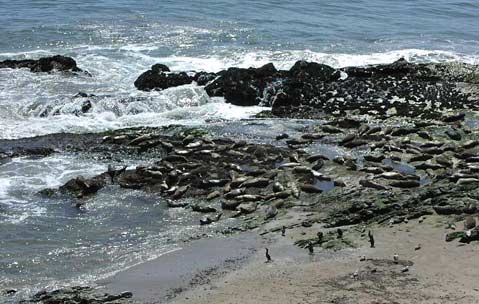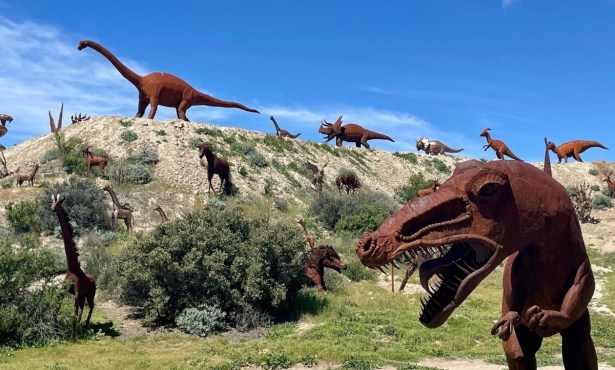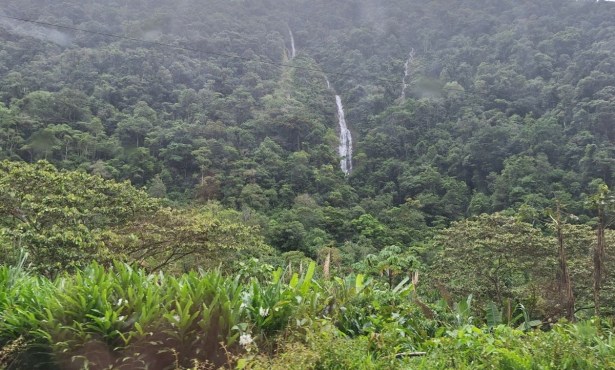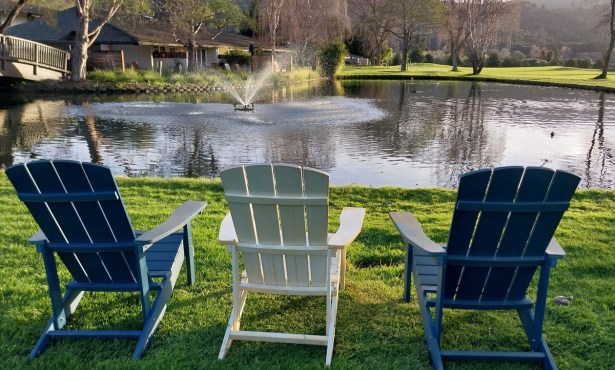The Call of the Carpinteria Bluffs
Picnic, Paint, Enjoy

Surrounded by eucalyptus trees, wildflowers, hiking trails, and ballparks, the Carpinteria Bluffs invite you to witness the last undeveloped open space on the coastline between Santa Barbara and Ventura. If that’s not enough to pique your interest, then come for the cultural history, or to birdwatch, bicycle, have a picnic with the family, or paint seascapes on the cliff overlooking the ocean.
It’s the immense beauty and recreational versatility of the place that keeps folks coming back. Take it from Michael Feeney, executive director of the Land Trust for Santa Barbara County. “People should enjoy the bluff park that is preserved,” he avidly urges. “I think the city has done a wonderful job improving the trails, maintaining recreation areas, and coordinating native plant restoration projects for the community to be part of and appreciate.”
With so many natural systems to see and things to do, it’s no wonder that organizations and locals in the community have fought tirelessly for decades to keep the bluffs protected. Yes, this area has had its share of threats from land developers and offshore drillers hoping to get in on the numerous resources harbored by the bluffs. However, these development propositions were repeatedly followed by a slew of lawsuits and community protests. Linda Krop, chief counsel of the Environmental Defense Center, said, “The decades-long battle to conserve the Carpinteria Bluffs from development really shows the importance of communities, their influence in protecting these last precious open spaces in our county.”
After years of negotiations with developers, the Land Trust and the Citizens for the Carpinteria Bluffs were finally able to achieve real progress in 2000: They reached an agreement to buy the land from its would-be developers. The City of Carpinteria now manages all 52 acres of the bluffs, but limits the development to hiking and biking trails, ball parks, and the protection of marine habitats.
There are many footpaths and bike trails leading, in particular, toward the harbor seal rookery, one of the bluffs’ most admired features, located near the far (towards Rincon) end of Carpinteria State Beach. If you visit this little intertidal gem between December and May, you will find many helpful volunteers protecting the seal pups from disturbances, and happy to answer any of your questions about the bluff area’s rich Chumash history or abundant marine life. (If you are there during the summer months, still be sure to stay 750 feet away from the seals at all times). It is best to go at low tide, and keep a close eye out for baby seal pups, great blue herons, sea stars, vibrantly colored nudibranchs, and the occasional octopus.
The rookery is actually quite close to the area where the Chumash would famously collect great heaps of tar that naturally accumulate in that area of the beach, and use it to line the inside of their tomals (boats, similar to canoes) as a sealant. The Spanish named the area Carpinteria because of the Chumash’s detailed carpentry skills, especially their mastery at producing tomals quickly.
So, whether you are out to immerse yourself in the land’s cultural history, hike through its sagebrush-lined trails, or play a game of soccer, the Carpinteria Bluffs are there for you to be a part of, and waiting patiently to welcome you with open arms.
4•1•1
The Citizens for the Bluffs often sponsor sunrise hikes and other events. For volunteer opportunities or upcoming events, please contact Betty Stein at (805) 684-3712.



